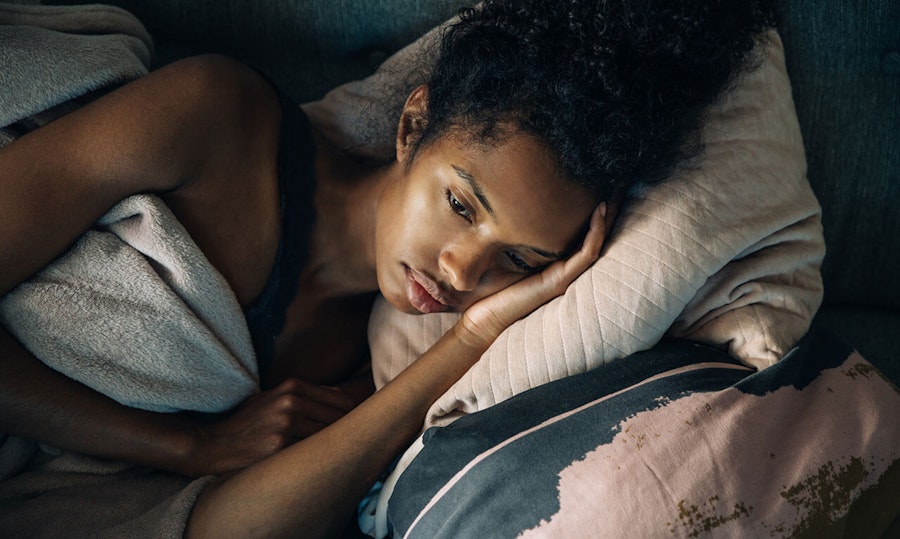What is PMDD? Severe PMS Explained
PMDD symptoms
While the symptoms of PMDD are similar to those of PMS, PMDD symptoms can have a more significant effect on your life. This can mean reducing your ability to work, socialize and maintain healthy relationships. Understandably, this can also have a negative impact on mental health, and in some cases may lead to suicidal thoughts. If you are suffering, you do not need to go through this alone, and you can always contact the National Suicide Prevention Helpline or access resources via their website.
PMDD symptoms can present in many ways including:
- Emotional PMDD symptoms
- Mood swings
- Feeling upset or tearful
- Feeling angry or emotional
- Experiencing anxiety
- Feelings of hopelessness
- Experiencing tension
- Reduced ability to focus
- Feeling overwhelmed
- Feeling extremely sluggish or tired
- Losing interest in activities you usually enjoy
- Experiencing suicidal thoughts
- Physical and behavioral PMDD symptoms
- Breast tenderness and swelling
- Pain in muscles and joints
- Headaches
- Feeling bloated
- Changes in your appetite such as overeating or specific food cravings
- Difficulty sleeping
- Finding it difficult to avoid or resolve conflict with others around you
- Feeling very upset if you feel that others have rejected you
How long does PMDD last?
Although you’ll likely only experience PMDD symptoms for one or two weeks before your period starts, this can feel like a very long time and may significantly affect your life while it’s happening. Once you get your period, the symptoms should start to go away, and they will usually fully disappear by the time your period has finished.
PMDD causes
As with many conditions in women’s health, the causes of PMDD are not fully understood. Research suggests that being extremely sensitive to changes in hormone levels might be one cause of PMDD. This means that an individual with PMDD will be sensitive to the changes in hormone levels that occur throughout the menstrual cycle.
It’s possible there’s also a genetic link to PMDD, and there may be others in your family who have experienced similar symptoms. However, due to the stigma surrounding women’s health, awareness and diagnosis of the condition would have been less likely for previous generations.
Diagnosing PMDD
Getting a PMDD diagnosis can take time, but the first step is to visit your healthcare professional. They may then ask you to keep a detailed, day-by-day record of your symptoms with some daily questions to complete. You’ll probably be asked to record these for a couple of months to help identify a possible pattern over the course of several cycles. You may also be asked about your medical history, and have a physical examination to rule out any other medical conditions.
PMDD can be difficult to diagnose, and it is not well-known even within the healthcare community, making diagnosing PMDD often tricky. As well as keeping a detailed daily record of your symptoms, you could take some guidance documents along with you to help your healthcare professional understand further.
PMDD treatments
There are a number of different treatments for PMDD ranging from psychological to physiological. Talking treatments may help individuals with psychological symptoms such as anxiety or depression. In some cases, antidepressants can also be used to treat PMDD. Adjustments to lifestyle, such as ensuring you get enough sleep, eat well, and exercise regularly can also help reduce symptoms.
The birth control pill can also be used to control or stop your periods, but while some find the pill beneficial, others may find it makes symptoms worse. Some individuals may benefit from holistic treatments for PMDD, although research into these treatments vary. There are also long-term treatments available (such as hormonal injections or surgery), but it’s best to discuss your options with a specialist to find out what’s the best PMDD treatment for you.
Looking after yourself on your PMDD journey
Given that diagnosis, management, and treatment of PMDD can be both challenging and time-consuming, it's important that you take care of yourself along the way. It's important to talk to someone that you can trust, and know that you can also contact specialist organizations for advice. Getting to know your cycle can also be a helpful way of predicting and managing symptoms while looking after your mental and physical wellbeing.
Thanks for taking some time to learn more about PMDD. Here at Natural Cycles, we care about creating better awareness around women’s health. Natural Cycles is an app that can help you on your own personal fertility journey, whether your goal is to find a hormone-free birth control or to plan pregnancy. The app also makes it easy to log your symptoms so you can keep track of the changes that happen in your body throughout your cycle.
Did you enjoy reading this article?
